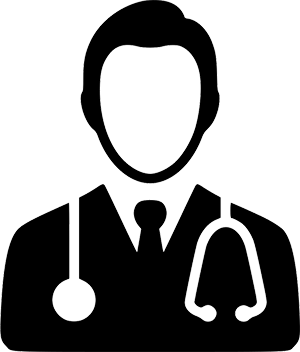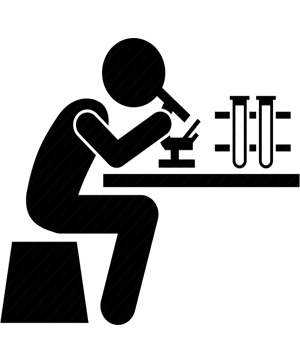Dr Lokesh Sharma has more than 23+ years of dedicated experience in the medical field.

Meet Our Doctor
Are you searching for the best gallbladder stone surgery in Jaipur? Your search is over now. Dr. Lokesh Kumar Sharma is a magician. His gallbladder stone treatments are very comfortable and are offered at a very low price.
He is the kind of person who makes sure that you get the best care possible during the treatment due to his years of experience and patient-centric approach. Visit Jaipur’s common and excellent gallbladder stone surgeon to see if you need any help.
Meet Our Doctor
Even though many gallstones mostly do not develop symptoms, some signs warn that a quick visit to the doctor is necessary. Here are the typical symptoms of gallstones:
A sense that is sharp or dull near the rib cage on the right side. This painful feeling can cause the back or right shoulder to be painful, either for a few minutes or several hours. Painful experiences are most common in meal times high in fats and maybe, if not treated, the pain may come back again.
Is frequently caused by bile duct obstruction or gallbladder inflammation. Signs of constant nausea and vomiting, especially after consuming fatty foods, are common. In extreme cases, there is the possibility of vomiting bile, which warrants immediate medical attention.
These consist of but are not limited to, stomach aching, burning in the chest, or bloating. Other symptoms among patients may include a bitter or acid taste at the back of their mouth. Fatty meals tend to worsen these symptoms.
Bile flow obstruction commonly leads to either constipation or diarrhea. The severity of the condition usually determines the length of the episodes, which can range from hours to days. Episodes of these issues can be extremely painful and make people question their normal way of life.
Signs of an infection stemming from bile duct obstruction. A combination of low-grade fever, sweating, and chills is best treated immediately. Neglecting treatment can lead to unpleasant consequences like abscesses.
Skin and eyes that turn yellow due to the accumulation of bile in the bloodstream. Often associated with a rash, darkish urine, and light-colored feces. This condition is a tell-tale sign of a bile duct blockage and needs immediate medical assistance.
Heavy bloating that won't go away even with small meals being consumed thus causing huge discomfort. Apart from that, this condition might be accompanied by high levels of gas in the body and the person may feel heavy in the stomach.
Gallbladder removal due to stone surgery, also called cholecystectomy, is a medical intervention carried out for the purpose of taking out gallstones and, in most situations, the whole gallbladder itself. Gallstones are able to assume different sizes and materials, and they are usually composed of hardened cholesterol or calcium sediment. If ignored, they can be life-threatening complications, such as infection and blockage.
Laparoscopic Cholecystectomy:
Open Cholecystectomy:
Using the most advanced diagnostic techniques such as these, Dr. Lokesh Kumar Sharma is able to recognize gallstones accurately.
1. Physical Examination:
2. Laboratory Tests:
3. Imaging Tests:
In order to offer his patients a flawless surgical process, an experienced medical worker Lokesh Kumar Sharma takes some steps, and here is one of his guides on how to prepare and recover:
Pre Surgery Measures:
During the Surgery:
Post-Surgery Care:
The fundamental concepts behind the occurrence of gallstones can be the basis for treatment and possibly for preventing their formation. Essential factors are as follows:
1. Genetics:
2. Diet:
3. Obesity:
4. Hormonal Changes:
5. Rapid Weight Loss :
The costs associated with the surgery for gallbladder stones are based on factors that include the following:
Dr. Lokesh Kumar Sharma has set reasonable and understandable rates that do not compromise service delivery. He practices medicine free from any unethical practices and patients receive value for their health expenditure.
FAQs About Gallbladder Stone Surgery
It is accessed as a benign procedure. However, there are elements to it that are intricate and require deft hands. Dr. Lokesh Sharma promises value-based action, reducing risks and a safe exit.
Noticeable changes in bowel movements are highly possible because bile secretion is now occurring but not being stored in the gallbladder. These are short-term, but diarrhea, bloating, and mild indigestion are commonplace. Dietary unwinding helps with these.
The average time for laparoscopic cholecystectomy is half an hour with a maximum of 2 hours, depending on the initial complexity of the case. One can take even more time for open surgeries, but they are equally effective.
Not a very daunting task, lower range activities can be started within a week, while heavy lifting should be avoided for four to six weeks. It is advisable to slowly increase activity levels as the recovery state of the body improves.
Timely attention to the medical instillations have to be made, showing these symptoms may result in infection or bile leaks. If symptoms like fever, extreme pains, continuous vomiting, or jaundice occur, get in touch with Dr. Lokesh Sharma right away.



Quick Links
Get Direction
Copyright © 2025, All rights reserved, Dr. Lokesh Kumar Sharma
Feel Free to fill the form below!